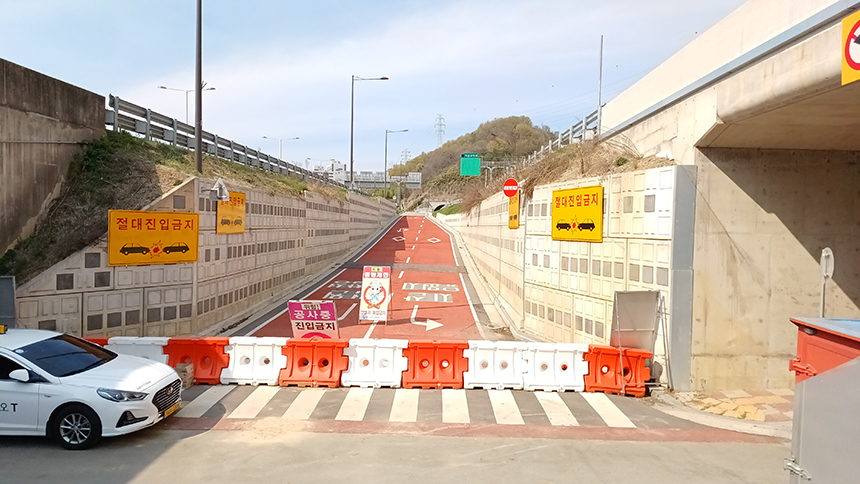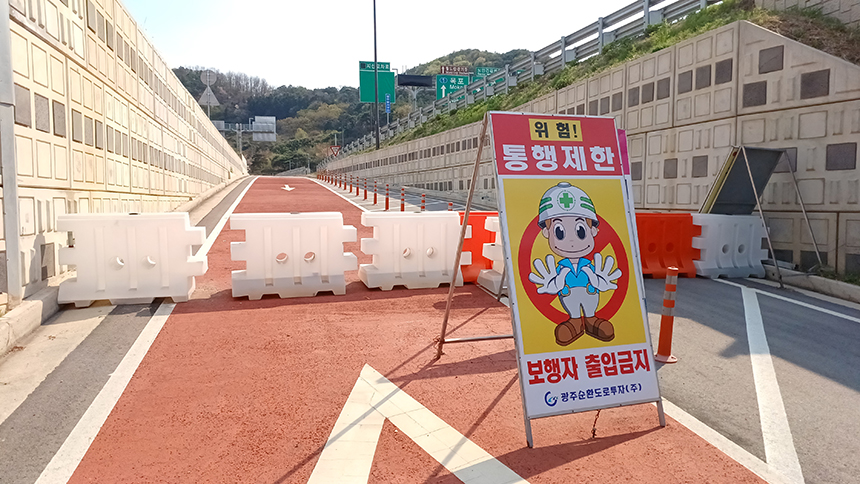Jisan IC: A Masterclass in Flushing Money Down the Toilet
By William Urbanski
What would you do with seven million dollars? Retire early? Buy a few houses? Set aside enough money to put your great grandchildren through university? How about build a deathtrap offramp against the express advice of experts that ends up being so dangerous that it can never be used?
Well, the powers that be in Gwangju decided that the last option would be the best way to completely squander a massive amount of taxpayer money. And that, in a nutshell is the legacy of the Jisan IC; An ill-advised boondoggle that was doomed from the start.
Doomed from Day One
Every day in the southeast side of Gwangju, there is a huge amount of commuter traffic that needs to access the gargantuan ring road that encircles the city. Around this part of Gwangju, the ring road basically only has two access points: one called Sotae (소태) at the extreme southeastern tip and the other at Duam-dong (두암동) in the east. As anyone who has driven around Gwangju can attest to, each of these access points is a complete and utter gong show at the best of times and virtual parking lots during rush hour. The Jisan IC was initially conceived as a way to alleviate this traffic congestion area by creating a third set of exit ramps roughly in the middle of the two existing ones. While this sounds great on paper, cars are actually driven on roads, and pesky notions such as “physics,” “safety,” and “civil engineering” meant that this grand scheme was never, ever going to work. But that did not stop the thing from being built anyway.
Let us look at the two main reasons why the Jisan IC was doomed to fail.

Safety Last
The location of the Jisan IC is dangerously close to a couple of tunnels, meaning there was never enough space to safely build any sort of on- or offramp. Disregarding the fact that the Jisan IC exit ramps were built on the left side of the highway (aka the place where people drive the fastest), in the southbound lane, the distance from the tunnel exit to the ramp was ten times shorter than the mandated safe distance. This meant that instead of drivers having 675 meters to go from the tunnel to the ramp, they would only have about 70.1 No big deal, right? Wrong. A recent assessment found that having a tenth of the required space to slow down and exit the highway (with a tunnel blocking the drivers’ vision) meant that the accident rate was expected to be fourteen times the normal rate!
You might be thinking how anyone could have known this ahead of time, but it turns out that police and transportation experts explicitly warned against building the interchange for the exact reasons outlined above. Their advice and their appeals to common sense were summarily ignored and construction pushed ahead.
I cruised up to the brand-spanking-new Jisan IC offramps to see them for myself, and what was immediately striking was how short they are. Since there is not enough space after the tunnel to slow down, any car driving at even 90 kilometers per hour would have to slam on the brakes to navigate the road properly. As well, the southbound off ramp only looks long enough for five to six cars, meaning it would almost certainly result in cars being backed up on the highway. That is, if it were to ever open.
Induced Demand
The second reason that Jisan IC was never going to be an effective solution to traffic congestion is due to a counter-intuitive concept called “induced demand.” Induced demand means that in the long run, building more roads actually leads to more traffic, not less. This happens because when a road is built or expanded, more people decide to drive. It is a vicious cycle for which it is not hard to find plenty of evidence. Think for a moment of the humongous road that runs in front of the U-Square Bus Terminal: It is nearly twenty lanes wide and yet is almost always jammed up. In short, more road equals more traffic and not the opposite.
People will only stop driving when it becomes so inconvenient that they search out other options. It follows that the real solution to traffic congestion is to improve other transportation options to the point that it makes no sense to drive. The long-awaited Gwangju subway expansion is a step in the right direction, but there are other things to be done. Buses can be given their own lanes so as to not be caught up in car traffic. A system of bike lanes and trails would also do wonders to get cars off the road.
Big Sexy Projects
All of this can really make a person wonder why the Jisan IC even actually got built at all. Ultimately, what I think it boils down to is that politicians (who control the city’s purse strings) want to look like big shots for their constituents. And if this means pushing through big, sexy, high-impact projects while ignoring common sense, reason, and the crystal-clear warnings of experts, so be it.
Two Wrongs Do Not Make a Right
Lately, Gwangju has not had a stellar reputation when it comes to construction projects, and when things go wrong (like in the Hak-dong and Hwajeong I-Park disasters), it costs lives. That is why Mayor Kang’s administration should be commended for putting an end to the Jisan IC before its completely unsafe design caused massive casualties. Seven billion won is a lot of money to write off on a boondoggle construction project, but if it saves a single life, it is the right decision.
While Jisan IC sits there built and never to be used, the story is not quite over. Hearings and investigations will try to find out exactly whom to blame for this enormous blunder and waste of money. Perhaps some metaphorical heads will roll, and maybe someone might even go to jail. As for the Jisan IC itself? I say just bulldoze the thing and forget it ever existed.
Source
1 Jeong, S. (2023. March 20). 광주 지산IC 부실, 누구 탓인가 [Gwangju Jisan IC’s faultiness, whose fault is it?]. BBS News. http://news.bbsi.co.kr/news/articleView.html?idxno=3103536
The Author
While an avid fan of the Fast and Furious franchise, William Urbanski actually does not like the realities of automobile-centric cities. He owns a car but rides his sweet electric bike to work.







